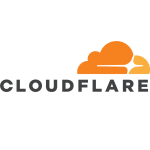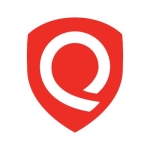What is our primary use case?
We use Prisma Cloud in several ways and there are a lot of use cases. The first way that we use it is for inventory. It keeps a near real-time inventory of virtual compute storage and services. Second, we use it for monitoring and alerting of misconfigurations or other items of security significance. Next is compliance. We use it to monitor compliance with the centers for internet security (CIS) benchmarks.
How has it helped my organization?
Prisma provides security that spans multi/hybrid-cloud environments. We have it configured to watch for compliance in AWS, the Google Cloud Platform, and very soon, Azure as well. This is important to us because our risk management organization mandated the fact that we would maintain this overwatch capability in any of our clouds that have virtual compute storage or workloads.
Prisma's comprehensiveness for protecting the full cloud-native stack is excellent.
The comprehensiveness of the cloud-native development lifecycles is excellent. For us, the deploy functionality is not applicable but the build and run capabilities are. It positively affects our operations and gives us optics that we wouldn't otherwise have, at the speed of the cloud.
Prisma provides the visibility and control that we need, regardless of how complex our environments are. This very much boosts our confidence in our security and compliance postures. It's also been deemed acceptable as a sufficient presence and efficacy of control by our internal auditors and external regulators alike.
This solution has enabled us to integrate security into our CI/CD pipelines and add touchpoints as a control stop in the release chain. The touchpoints are seamless and very natural to our automation.
Prisma Cloud is a single tool that we can use to protect all of our cloud resources without having to manage and reconcile several security and compliance reports. It unifies and simplifies the overall operations.
Using this tool provides us with risk clarity across the entire pipeline because we use it as a pre-deployment control, ensuring that the run state is known and the risk posture is known at runtime. Our developers use this information to correct issues using our tools for YAML, JSON, CloudFormation templates, and Terraform.
Prisma does so much pre-screening that it limits the number of runtime alerts we get. This is because those pre-deployment code controls are known before the run state.
The investigations capabilities enhance our process and lower incident response and threat detection time. However, it is an enabler and it is run in parallel with our SIEM, which is Splunk. Most of what we're going to do, investigation-wise, is going to be in Splunk, simply because there's better domain knowledge about the use of that tool in Splunk's query language.
What is most valuable?
The most valuable feature is the continuous cloud compliance monitoring and alerting. The way Prisma works is that it has a tentacle from Palo Alto's AWS presence into ours. That tentacle is an application program interface, an API, a listener. That listener goes in and is entitled to look at all of the Amazon Web Services' logging facilities. It can then do event correlation, and it can tattletale on misconfigurations such as an S3 storage bucket made publicly available. We wouldn't otherwise be aware of that if Prisma didn't watch for it and alert on it.
Prisma provides cloud workload protection and cloud network security in a single pane of glass, and these items are very important to us. It also provides cloud infrastructure entitlement management but identity and access management is not something that we use Prisma for. We implemented a PoC but we opted to use another tool for that use case.
The security automation capabilities provided by this product are excellent and industry-leading. Palo Alto bought a company called Twistlock, which makes a pre-deployment code scanner. They added its functionality to the feature set of Prisma in the form of this compute module. Now, we're able to use the Twistlock capability in our automation, which includes our toolchains and pipelines.
This tool provides excellent features for preventative cloud security. We use all of the auto-remediation capabilities that Prisma offers out of the box. That "see something, do something" auto-remediation capability within Prisma keeps our human responders from having to do anything. It's automated, meaning that if it sees something, it will right the wrong because it has the entitlement to do that with its Prisma auto-remediation role. It's great labor savings and also closes off things much quicker than a human could.
Palo just keeps bolting on valuable features. They just show up in the console, and they have their little question mark, down in the lower right-hand corner, that shows what's new, and what's changed for August or September. They just keep pouring value into the tool and not charging us for it. We like that.
What needs improvement?
We would like to have the detections be more contemporaneous. For example, we've seen detections of an overprivileged user or whatever it might be in any of the hundreds of Prisma policies, where there are 50 minutes of latency between the event and the alert. We'd always want that to be as quick as possible, and this is going to be true for every customer.
The billing function, with the credits and the by-workload-licensing and billing, is something that is a little wonky and can be improved.
For how long have I used the solution?
We began using Prisma Cloud in October or November 2018, when it was still known as RedLock.
What do I think about the stability of the solution?
Stability-wise, it has been perfect.
What do I think about the scalability of the solution?
The scalability is excellent. Palo keeps adding cloud support, such as for Alibaba, Oracle, and others.
We have approximately 5,500 employees. Our deployment is all-encompassing overwatch to all of our AWS accounts, of which there are 66. We also have two or three different folders within GCP.
We do have plans to increase our usage. This includes using it for more of its capabilities. For example, there is a workload protection link that we haven't fully embraced. There are also some network security features and some dashboarding and geo-mapping capabilities that we could make better use of.
How are customer service and support?
The technical support is excellent. We have premium support with Palo Alto and I never have any critique for the quality or speed of support.
Which solution did I use previously and why did I switch?
We have used this solution from the outset of our cloud journey. It began with Evident.io, then it became RedLock, and then it became Prisma Cloud.
How was the initial setup?
The initial setup is very straightforward. We did it several times.
The first one was deployed to AWS, which probably took about an hour. Years later, as we adopted the Google Cloud, it was configured in probably half an hour.
Palo provides the necessary setup instructions and you can't go wrong, as long as you have the role entitlement set up for Prisma. The handshake only takes about an hour.
What about the implementation team?
Our deployment was done entirely in-house.
We have three people, full-time, who are responsible for the maintenance. Their roles are policy management, meaning these are the rule sets. It's called RQL, the RedLock query language, the out-of-the-box policies that are ever dynamic. When there's a new policy, we have to go in and rationalize that with our cyber organization.
We have to scrutinize the risk rating that's put on it by Palo. We have to realize when we're going to turn it on and turn it off. Also, we have to consider the resulting incident response procedures associated with the alert happening.
What was our ROI?
One metric that would be meaningful in this regard is that our company has had no cloud-based compromise.
What's my experience with pricing, setup cost, and licensing?
You can expect a premium price because it is a premium quality product by a leading supplier.
We are a strategic partner with Palo Alto, meaning that we use all of their solutions. For example, we use their NG firewalls, WildFire, Panorama, Prisma, and all of their stuff. Because Prisma was an add-on for us, we get good pricing on it.
There are costs in addition to the standard licensing fees. The credits consumption billing model is new and we're going to be using more of the features. As we embrace further and we start to use these workload security protections, those come at an incremental cost. So, I would say that our utilization, and thus the cost, would trend up as it has in the past.
Which other solutions did I evaluate?
We evaluated several other products such as DivvyCloud, Dome9, and a product by Sophos.
We did a full comparison matrix and rationalization of each of the capabilities. Our sister company was using DivvyCloud at the time and as we do from time to time, we conferred with them about what their likes and dislikes were. They were moderately pleased with it but ultimately, we ended up going with Palo Alto.
What other advice do I have?
My advice for anybody who is considering this product is to give it a good look. Give it a good cost-balance rationalization versus the cost of a compromise or breach, because it's your defense mechanism against exposure.
I would rate this solution a ten out of ten.
Which deployment model are you using for this solution?
Public Cloud
Disclosure: PeerSpot contacted the reviewer to collect the review and to validate authenticity. The reviewer was referred by the vendor, but the review is not subject to editing or approval by the vendor. The reviewer's company has a business relationship with this vendor other than being a customer: Partner
















